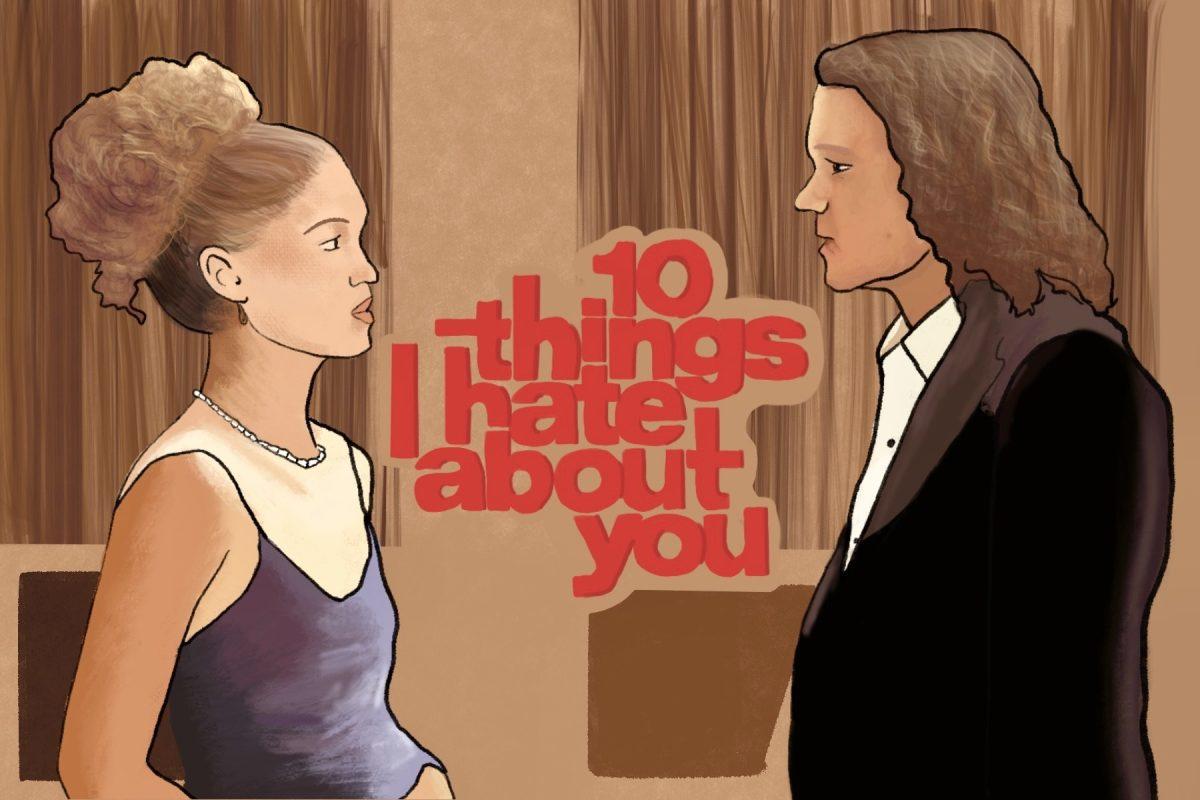by Sophia Tran (’25) | March 22, 2024

My first exposure to the video game Five Nights at Freddy’s began four years ago. As a thirteen-year-old, I watched my younger brother tap furiously on his mouse and squeal in terror as a humongous yellow chicken animatronic jumped onto his screen. At a glance, Five Nights at Freddy’s looked like a video game version of my childhood nightmares at Chuck E. Cheese (I still haven’t recovered fully from that ordeal). For those not familiar with Five Nights at Freddy’s, it’s a video game where you play as a night-time security guard at a kid’s pizzeria for five nights. It all sounds simple enough until you learn that the kid’s pizzeria is controlled by a gang of bloodthirsty animatronics sneaking through the hallways and plotting out that unfortunate employee’s inevitable death. In short, this game was a physical materialization of six-year-old Sophia’s childhood nightmares.
Last October, the film Five Nights at Freddy’s came out, and I was intrigued by this new horror movie’s take on the video game I had watched my brother play many years ago. But I was even more curious about how the film would develop a plotline around such a well-known and beloved video game. In my mind, Five Nights at Freddy’s would be another dumpster fire of a movie made by an industry continually capitalizing on already popular films, novels, or in this case, video games. After watching Winnie-the-Pooh: Blood and Honey, my expectations for these types of low-budget niche horror films had reached impressive lows. As I pulled out my popcorn bag, I was ready to laugh at each ludicrous and frustratingly illogical moment in this video game rip-off of a movie.
To my surprise, Five Nights at Freddy’s was no such failure. Although this film was nowhere on the same level with Silence of the Lambs or Hereditary, Five Nights at Freddy’s was a pleasantly surprising film that embraces the quirkiness of this well-known video game.
One such quirk is the animatronics, the primary antagonists in the film. Throughout the history of horror cinematography, horror films have enjoyed corrupting the image of purity associated with common objects or individuals such as dolls, children, and, regretfully, Winnie the Pooh. As such, Five Nights at Freddy’s does the same thing with their animatronics. Although I couldn’t help but laugh during some of those scenes and at the animatronics’ ridiculously clumsy movements, the film itself did a great job of tapping into the childhood fears that appeal to an adult audience. In particular, I enjoyed how the film didn’t resort to using CGI, a choice that would have stripped the film of its authentic horror aspect; rather, the puppets used throughout the film helped to develop a more realistic, albeit still outlandish, atmosphere for the rest of the film.
Another aspect I appreciated about this film was its introduction of new sub plot lines, namely the background of the protagonist (the security guard). Learning about how he first met the film’s antagonist as a child added a level of complexity that intrigued me as I learned more about what was at stake for our protagonist. However, there were definitely other aspects of the security guard’s storyline that were questionable, especially in terms of the set-up, and it was incredibly predictable for me as a viewer to identify the mastermind behind all the murders at this kid’s pizzeria.
Overall, Five Nights at Freddy’s was a pleasant film for any casual Friday night. Although the film lacked the complexities found in other more classic horror films, this film honored a popular video game in such a way that viewers like myself found ourselves engaged in this storyline. I may never want to revisit Chuck E. Cheese after watching this film, but I will gladly rewatch the pleasantly surprising movie that is Five Nights at Freddy’s.










































































Nithin Satish • Nov 23, 2024 at 5:42 pm
Feddy fezbe